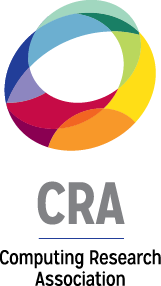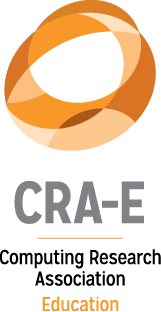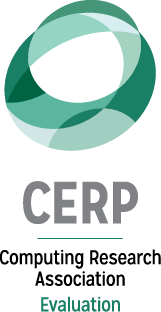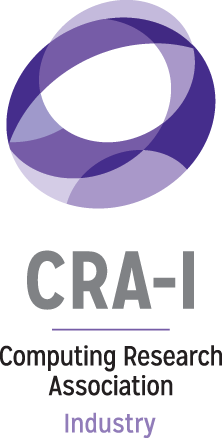A7: Anytime Anywhere Affordable Access to Anything by Anyone Authorized
Message from the CISE AD
Imagine a world where computers are everywhere—we use them everywhere, but we see them nowhere because they are either invisible to the naked eye or so visible they are taken for granted.
Ubiquitous computing has been a dream since the late 1980s and is a reality today—to a degree. Looking ahead, computing will become even more ubiquitous along many dimensions, and for each dimension, at multiple scales. To convey the multiplicity of dimensions and scale, I have dubbed the 21st Century version of this vision “A7: Anytime anywhere affordable access to anything by anyone authorized.” Technological advances and societal expectations have expanded not only the what, who, and how since the 1980s, but also the relative importance of two dimensions, affordable and authorized. Fueling A7 will be a degree of intelligence in our computing systems beyond what they display today. The power and versatility of tomorrow’s computing systems will be defined by the synergistic and complementary combination of human intelligence and machine intelligence.
Anytime and anywhere: The three dimensions of space and the fourth of time speak most obviously to ubiquity. As our cyber-systems become fully integrated into the physical world, we will seamlessly move in and out of cyberspace without even realizing it. Cyber-systems will be present at the nano-scale with sensors monitoring our environment and at the tera-scale with earth-space networks providing a lens into our universe. Cyber-systems will need to respond in real time to prevent smart cars from colliding and smart airplanes from falling from the sky; at the other extreme, they will be the storage medium for preserving information forever.
Anything: We are digitizing everything from museum relics to our daily lives, and we are storing everything on devices from palm-sized gigabyte music players to data centers measured in terms of watts and acres, not bytes. What we access goes beyond digital artifacts to include people, services, and knowledge.
Anyone: Computing is for everyone: young and old, rich and poor, abled and disabled, literate and illiterate. Linguistic diversity will no longer be a barrier to communication; automatic language translation for learning, conducting business, and socializing will be presumed.
Access: We will want the ability to create, store, retrieve, search, analyze, control, modify, and delete anything. Only authorized users will have the relevant access rights. Access will be based on higher-level semantic queries than search strings of today. From neuro-machine interfaces to wireless power we will enjoy new means of untethered access.
Affordable: Cost is not a barrier to access. Africa’s cellphone boom is not only helping local entrepreneurs sell fish and buy plants, but is also changing voting and banking processes.
A second-order effect of affordable information technology is to make other services affordable: IT investments in China’s Yellow Sheep River provide access to education for children from poor families unable to afford to pay for school, bringing the region “from the 15th century to the 21st.”1
Authorized: Heightened concern for security and privacy by citizens since the innocence of the 1980s is warranted. Cyber-attacks as occurred in Estonia and Georgia are just the ones the public hears about. At the same time, the next generation thinks nothing of twittering minutiae about their lives on the Internet. Specification and enforcement of dynamic security and privacy policies will be tailored to individuals as well as to organizations.
How CISE Programs Relate to A7
CISE’s core programs in its three divisions—Computing and Communication Foundations, Computer and Network Systems, and Information and Intelligent Systems—all play a role in meeting the scientific, technological, and societal research challenges of A7(see www.cise.nsf.gov for details of all programs). In addition, the following CISE cross-divisional programs highlight some of the more ambitious aspects of this vision.
Cyber-Physical Systems: The new CPS program, joint with the Electrical, Communications, and Cyber Systems Division of the Engineering Directorate, addresses the interactions between the discrete and the continuous, where tight coupling between the cyber-system and its physical environment demands precise control and coordination. The CPS program spotlights the pressing challenge of reasoning in the presence of uncertainty where cyber-systems are truly anytime and anywhere.2
Data-Intensive Computing: How do we compute with oceans of data? Giving access to anything is not simply giving access to the bits—it is giving access to the knowledge those bits represent. To turn data into information into knowledge is one of our biggest challenges today.
Trustworthy Computing: By “trustworthy” we mean secure, reliable, privacy-preserving, and usable. We need foundational advances in security and privacy if we are to guarantee authorized access of the A7 vision. We need to explore the balances between user control and user convenience without compromising security and by protecting privacy.
Network Science and Engineering: “Computers” of tomorrow will be networks of people and computers working together to solve problems neither can solve alone. Better understanding of complex interactions and dependencies among these computing and communication networks, from the substrate layer through the people layer, will let us design and build tomorrow’s infrastructure—the connective tissue of A7.
Finally, software is computing’s secret weapon. It is software that will make A7 a pleasurable reality, not a nightmare. It is software that will make our cyber-systems more intelligent, more flexible and adaptable, more customizable for individual people and whole populations. CISE encourages the entire PI community “to rethink software”3: we need new ways of developing software commensurate with our rapidly advancing technologies and the increasing diversity of our users.
Endnotes:
1 James Fallows, “How the West Was Wired,” The Atlantic, October 2008, pp. 56-65.
2 The entire seven-page written testimony by Don Winter, VP of Engineering and Information Technology of Boeing Phantom Works, presented to the Committee on Science and Technology on July 31, 2008, was devoted to CPS, arguing their life-critical role not just in aerospace, but other sectors, e.g., automotive, military, and energy.
3 Wing, Hirsh, Kannan, and Znati, “Rethinking Software,” CISE Dear Colleague Letter, September 10, 2008.








